Andean Cock-of-the-Rock
- December 18, 2023
- 0 comment
The Andean cock-of-the-rock (Rupicola peruvianus), also known as tunki (Quechua), is a large passerine bird of the cotinga family native to Andean cloud forests in South America. It is the national bird of Peru. It has four subspecies and its closest relative is the Guianan cock-of-the-rock.
Physical Appearance

Andean Cock-of-the-Rock
- Lifespan: 15 years
- Habitat: Cloud Forests, Montane Forests, High Humidity, and Dense Vegetation.
- Diet: Fruits, Insects, and Small Vertebrates.
- Size: 32–34 cm
- Weight: 240–260 grams
- Wingspan: 50–55 cm
- Conservation Status: Least Concern
- Population Trend: Stable Population
These subspecies may exhibit slight differences in plumage coloration and markings, but they all belong to the same species, Rupicola peruvianus. The variations often reflect the bird’s adaptation to the specific environmental conditions in their respective regions.
Species Type of Andean Cock-of-the-Rock
The Andean Cock-of-the-Rock (Rupicola peruvianus) is a species of bird belonging to the family Cotingidae. Within this family, the Andean Cock-of-the-Rock is placed in the genus Rupicola. The genus name “Rupicola” is derived from Latin, where “rupes” means rock, reflecting the bird’s preference for rocky environments. The species name “peruvianus” indicates its association with Peru, one of the countries where it is commonly found.
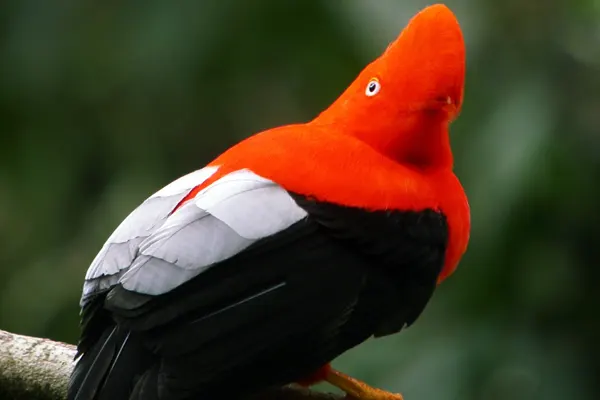

The Andean Cock-of-the-Rock (Rupicola peruvianus) is a stunning bird belonging to the cotinga family, a group of vibrant and diverse tropical birds found in South America. Imagine a feathered masterpiece, adorned with fiery plumage and a flamboyant personality – that’s the Andean Cock-of-the-Rock!
Feather Coloration of Andean Cock-of-the-Rock
The brilliant coloration of the Andean Cock-of-the-Rock, especially in males, serves a dual purpose. It not only contributes to their visual appeal but also plays a crucial role in attracting mates during courtship displays in their lekking behavior. The lek is a communal gathering where males showcase their colorful plumage and perform elaborate displays to attract female attention.
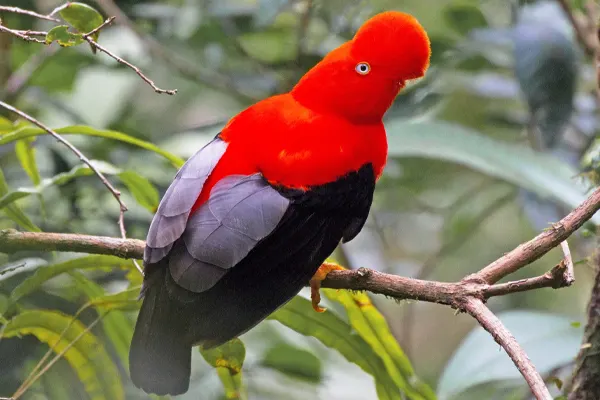
Male
- Head, neck, breast, and shoulders: These areas boast a vibrant orange or scarlet hue, often described as “fiery” or “flaming.” The specific shade can vary depending on subspecies.
- Crest: This eye-catching feature, unique to males, consists of two rows of feathers forming a fan-shaped disk on top of their heads. The crest matches the head coloration, adding to the overall fiery appearance.
- Wings and tail: In stark contrast to the fiery body, the wings and tail are a deep, velvety black. This creates a striking visual balance and highlights the vibrant orange plumage.
- Underparts: The underside of the body, including the belly and chest, shares the same vibrant orange color as the head and neck.
Female
- Overall plumage: Compared to males, females are much more cryptically colored. Their feathers are predominantly a rich brown, with shades of chestnut and olive green depending on subspecies. This camouflage helps them blend into the forest environment while raising young.
- Underparts: The underparts of females tend to be lighter than the upperparts, often with a buff or rufous color.
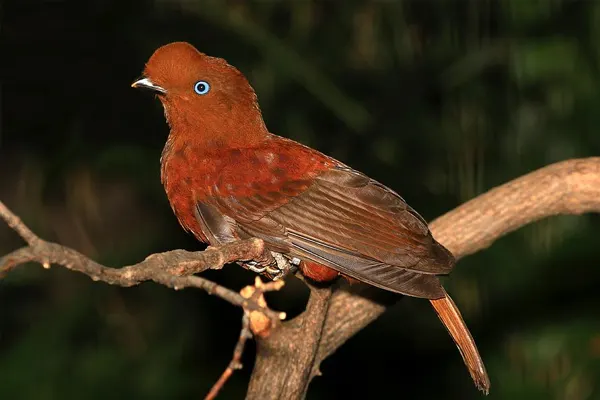
The contrasting feather colors are a result of sexual selection. The males’ flamboyant plumage is an adaptation to attract mates during their elaborate courtship displays. By showcasing their vibrant colors and energetic dances, males compete for the attention of females, who choose the most impressive mate.
Flight Characteristics of Andean Cock-of-the-Rock
The flight characteristics of the Andean Cock-of-the-Rock are adapted to the dynamic and complex environment of the cloud forests. Their ability to navigate through the dense vegetation and perform aerial displays contributes to their survival and reproductive success in their unique habitat.
- Maneuverability
- The Andean Cock-of-the-Rock exhibits remarkable maneuverability in flight, allowing it to navigate through the intricate and varied vegetation of the cloud forest. This agility is crucial for foraging, evading predators, and moving within the forest canopy.
- Short-distance Flights
- These birds are not known for extensive long-distance flights. Their flight is typically characterized by short bursts of movement, often between trees or within the forest understory. Their preference for rocky environments may also influence their flight patterns.
- Strong and Direct
- The flight of the Andean Cock-of-the-Rock is strong and direct when needed. This characteristic is particularly important during territorial displays and courtship rituals when males may perform aerial displays to attract females.
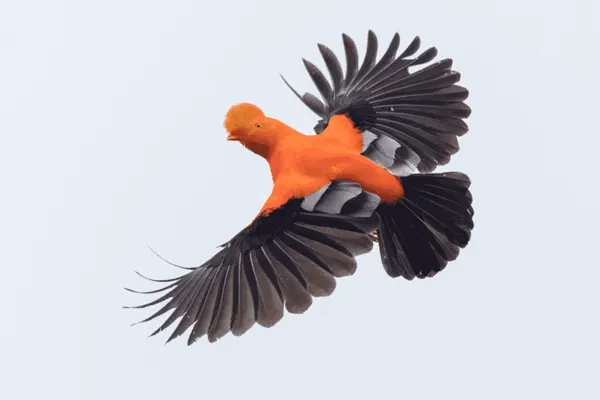
- Forest Canopy Navigation
- Given their habitat in the cloud forests, the birds are adapted to navigating through the forest canopy. Their flight is well-suited for moving efficiently among the branches, allowing them to access different layers of the forest for foraging and other activities.
- Courtship Displays in Flight
- During the breeding season, males may incorporate flight into their elaborate courtship displays. This can include aerial movements and maneuvers to showcase their vibrant plumage and attract females.
- Perch-hopping
- Outside of sustained flight, Andean Cock-of-the-Rocks are known for “perch-hopping.” This behavior involves moving from one perch to another in short, direct flights within their territory.
The flight characteristics of the Andean Cock-of-the-Rock are specifically adapted to their life in the cloud forest. Their modified wings, maneuverability, and ability to navigate dense vegetation allow them to thrive in this unique habitat, while their limitations remind us of the delicate balance between adaptation and vulnerability in the natural world.
Migration Patterns of Andean Cock-of-the-Rock
The Andean Cock-of-the-Rock (Rupicola peruvianus) is generally a non-migratory species, meaning it does not undertake long-distance seasonal movements like some other bird species do. These birds are primarily resident in their preferred habitats, which are the cloud forests of the Andes Mountains in South America.
Stable Food Sources
- Their preferred habitat, the cloud forests of the Andes, provides a consistent and reliable source of food year-round. The abundance of fruits, insects, and other small animals eliminates the need for long journeys in search of sustenance.

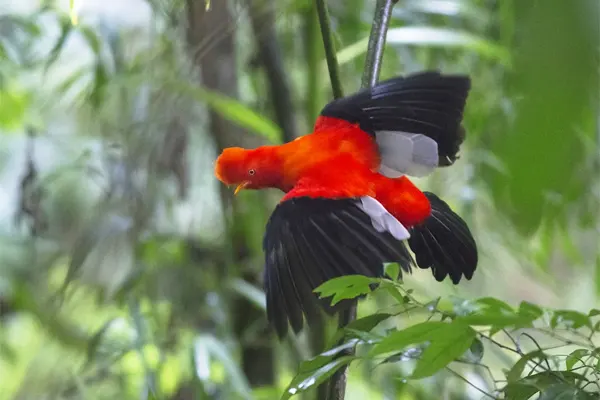

Suitable Breeding Grounds
- The Andean Cock-of-the-Rock relies on rocky cliffs and ravines for nesting and courtship displays. These features are readily available within their established home ranges, eliminating the need to travel to distant breeding grounds.
Territoriality
- Males establish and defend territories around their chosen leks (open areas for courtship displays). Migrating would disrupt these established territories and potentially hinder their breeding success.
The Andean Cock-of-the-Rock’s sedentary nature reflects its adaptation to the rich and stable environment of the Andean cloud forests. Their limited movements within their home range ensure access to food, suitable nesting sites, and mates, without the need for extensive migrations.
Habitat & Distribution of Andean Cock-of-the-Rock
The Andean Cock-of-the-Rock (Rupicola peruvianus) is primarily found in the cloud forests of the Andes Mountains in South America. These cloud forests are characterized by cool temperatures, high humidity, and dense vegetation. The bird’s preferred habitat ranges in elevation from 1,000 to 2,400 meters (3,280 to 7,874 feet). They are often associated with rugged terrain and rocky outcrops, where they can find suitable nesting sites.
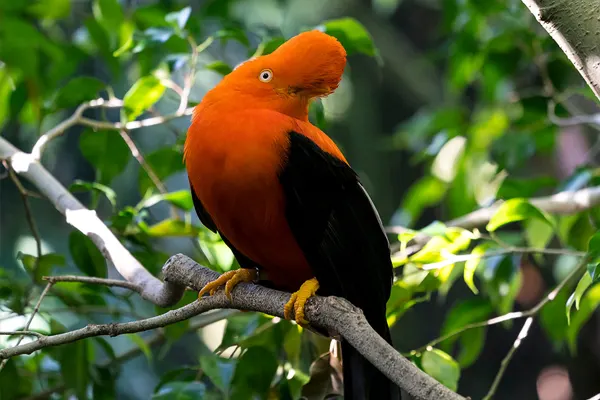
Distribution: The species has a distribution that spans several countries in South America, including Peru, Ecuador, Colombia, and northern Venezuela. The specific distribution may vary among the different subspecies of the Andean Cock-of-the-Rock. The bird’s presence is often associated with the Andean slopes and foothills, where suitable cloud forest habitats are found.
Behavioral Traits of Andean Cock-of-the-Rock
These behavioral traits are not only fascinating to observe but also play a critical role in the reproductive success and survival of the Andean Cock-of-the-Rock in its cloud forest habitat. The communal displays and lekking behavior are particularly distinctive aspects of their reproductive strategy.
Communal Displays
- During the breeding season, males gather in communal display sites called leks. In these leks, they engage in elaborate and synchronized displays to attract females. These displays involve fluffing their vibrant plumage, hopping, and making various calls. The purpose is to compete for the attention of females.
Lekking Behavior
- Lekking is a behavior where males congregate in a specific area to display and compete for mates. The lek serves as a communal stage where each male tries to outdo the others in terms of displays and vocalizations to attract females. The lekking behavior is a spectacle in which multiple males showcase their vivid colors and distinctive crests.
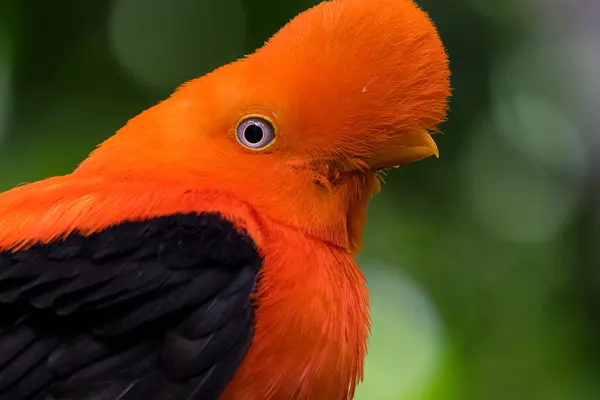
Territorial Behavior
- Outside of the breeding season, these birds are territorial, establishing and defending specific areas within their habitat. Males, in particular, defend territories that may include suitable nesting sites.
Courtship Rituals
- Courtship involves the male displaying its vibrant plumage and engaging in various movements and vocalizations to attract the attention of a female. The elaborate courtship rituals play a crucial role in mate selection.
Role in Ecosystem of Andean Cock-of-the-Rock
The Andean Cock-of-the-Rock is an integral part of the cloud forest ecosystem, contributing to seed dispersal, insect control, and serving as an indicator species. Conservation efforts focused on protecting their habitat benefit not only this charismatic bird but also the overall biodiversity and ecological health of the Andean cloud forests.
Seed dispersal
- These fruit-loving birds act as efficient seed dispersers. As they consume various fruits, seeds pass through their digestive system without being harmed and are eventually deposited on the forest floor when they defecate or regurgitate. This process helps disperse seeds of various plant species, promoting diversity and regeneration within the cloud forest.
Insect control
- While fruits are their primary food source, Andean Cock-of-the-Rock also supplement their diet with insects, snails, and small frogs. This helps keep insect populations in check, preventing them from becoming overly abundant and potentially harming the forest ecosystem.

Pollination
- As they move from flower to flower while foraging for fruits, Andean Cock-of-the-Rock contribute to plant pollination. Their feathers brush against pollen grains, transferring them to other flowers, facilitating successful reproduction and seed production in various plant species.
Indicator species
- The presence and abundance of Andean Cock-of-the-Rock can serve as an indicator of the overall health of the cloud forest ecosystem. Their sensitivity to habitat degradation and pollution makes them valuable tools for monitoring the environmental quality of these sensitive ecosystems.
The Andean Cock-of-the-Rock plays a multifaceted role in the Andean cloud forest ecosystem. Their contributions to seed dispersal, insect control, pollination, and ecotourism are crucial for maintaining the ecological balance and supporting the overall health of this biodiverse habitat. Furthermore, their cultural significance strengthens the bond between humans and nature, promoting conservation efforts for future generations.
Dietary Habits of Andean Cock-of-the-Rock
The Andean Cock-of-the-Rock’s omnivorous diet reflects its adaptability to the diverse resources available in the cloud forests of the Andes. This dietary flexibility contributes to its ecological role and survival in its unique habitat.
- Fruits
- Fruits constitute a significant portion of the Andean Cock-of-the-Rock’s diet. They feed on a variety of fruits found in the cloud forests of the Andes. The consumption of fruits not only provides essential nutrients but also plays a role in seed dispersal, as the seeds pass through the digestive system and are later excreted in different locations, contributing to the regeneration of plant life.
- Insects
- In addition to fruits, these birds are opportunistic insect feeders. They forage in the forest canopy and understory, using their strong, hooked beaks to capture insects such as beetles, ants, and caterpillars. Insect consumption contributes to the regulation of insect populations in their habitat.
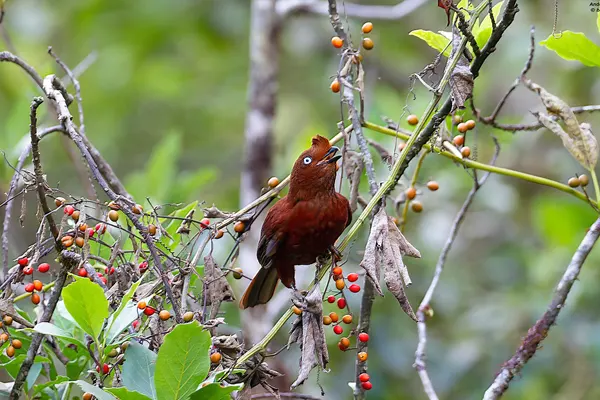
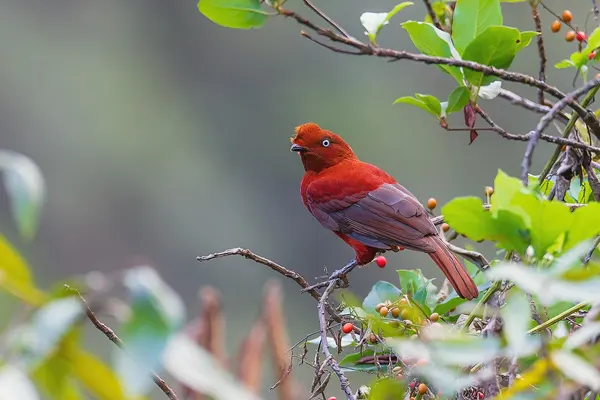
- Small Vertebrates
- The Andean Cock-of-the-Rock may also include small vertebrates in its diet. This can range from small reptiles to amphibians and possibly small mammals. The inclusion of vertebrates in their diet provides a protein source and contributes to the overall dietary diversity.
- Foraging Behavior
- These birds are known for their active foraging behavior, moving through the forest vegetation in search of food. Their diet may vary seasonally based on the availability of fruits and insects. During the breeding season, when energetic demands are higher, their foraging activity may intensify.
The Andean Cock-of-the-Rock’s dietary habits are intricately linked to the health of the cloud forests. Their dependence on specific fruits makes them susceptible to habitat loss and deforestation, as these changes disrupt their food sources and breeding grounds. By understanding and protecting their vital role in the ecosystem, we can help ensure the survival of these fiery jewels of the Andes and the delicate balance of the cloud forests they call home.
Interesting Facts of Andean Cock-of-the-Rock
The Andean Cock-of-the-Rock, remember that their beauty goes beyond the fiery feathers. They are a testament to adaptation, resilience, and the intricate web of life within the cloud forest. By understanding and appreciating these fascinating facts, we can better protect these feathered jewels and their precious habitat for future generations.
- The Master of Disguise: While the male boasts fiery plumage, the female is a master of camouflage. Cloaked in shades of brown and green, she blends seamlessly into the cloud forest foliage, ensuring her safety during nesting and raising chicks.
- The Architect of Lek-domes: Males don’t just have elaborate dances; they also build impressive structures called “lek-domes.” These dome-shaped clearings within the forest are meticulously created by the males, who remove leaves and debris to create the perfect stage for their flamboyant displays.
- The Rock-loving Dancer: Their name isn’t just for show! Andean Cock-of-the-Rock prefer nesting and displaying on rocky cliffs and ravines. These sturdy structures provide secure platforms for their nests and lek-domes, offering protection from predators and the elements.

- The Vocal Entertainer: Their repertoire goes beyond the loud mating calls. Andean Cock-of-the-Rock have a surprisingly diverse range of vocalizations, including soft whistles and trills used for communication within family groups.
- The Unexpected Snack: While fruits are their main course, Andean Cock-of-the-Rock have a taste for the unconventional. They’ve been observed eating snails, frogs, and even small lizards, demonstrating their adaptability and diverse dietary preferences.
- The Winged Gardener: Their feathery wings aren’t just for show. As they flit from tree to tree, they inadvertently brush against flowers, transferring pollen and aiding in plant pollination. This vital role contributes to the overall health and diversity of the cloud forest ecosystem.
- The Symbol of Resilience: The Andean Cock-of-the-Rock face threats like habitat loss and climate change. Yet, their populations remain relatively stable, testament to their resilience and adaptability. Their presence inspires hope and serves as a reminder of the importance of protecting their precious cloud forest home.
Nesting Habits of Andean Cock-of-the-Rock
The unique nesting habits of the Andean Cock-of-the-Rock, including the choice of concealed rocky locations and the cooperative efforts of the pair, contribute to the species’ reproductive success within the challenging environment of the Andean cloud forests.
- A Solo Project: Interestingly, unlike some bird species where both parents share nest-building duties, the Andean Cock-of-the-Rock female takes on this responsibility alone. This allows the male to focus on his flamboyant courtship displays and attract mates, while the female ensures the safety and comfort of the future offspring.
- A Hatching Haven: The female typically lays two eggs, which she incubates diligently for around 28 days. During this time, she remains close to the nest, carefully adjusting the temperature and humidity levels within the cup to ensure optimal conditions for developing chicks.

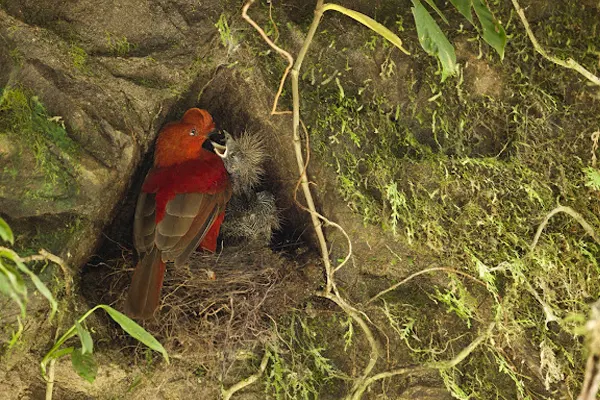
- A Cup of Mud and Devotion:The nests themselves are cup-shaped and constructed entirely by the female. She gathers mud, moss, and leaves, meticulously weaving them together to create a cozy and well-insulated home for her future chicks. The inside of the nest is often lined with soft feathers and plant fibers for added comfort and warmth.
- Location: Unlike many birds who build nests in trees, the Andean Cock-of-the-Rock prefers rocky cliffs and ravines. These sturdy structures provide secure platforms for their nests, offering protection from predators and the elements. Nests are typically located near water sources and away from open areas, further enhancing safety for the vulnerable chicks.
The specific timing of nesting corresponds to the breeding season, during which males engage in lekking behavior to attract females. The communal displays and courtship rituals play a role in pair formation and the initiation of the nesting process.
Calls & Vocalizations of Andean Cock-of-the-Rock
The vocalizations of the Andean Cock-of-the-Rock may vary among individuals, and the purpose of these calls can be context-dependent, serving communication needs within their social and breeding behaviors. While not as vocally expressive as some other birds, their calls and vocalizations play a role in maintaining social bonds and coordinating behaviors within their cloud forest habitat.
Mating Calls
- Loud “youii” calls: These booming calls are the most iconic vocalization, used by males during lek displays to attract mates. The intensity and frequency of these calls indicate dominance and attract the attention of females.
- Clucking sounds: Males also emit soft clucking sounds during lek displays, adding another layer to their vocal repertoire.
- Long, drawn-out “kip-kip-kip” calls: These calls are used by both males and females, sometimes as a prelude to other vocalizations or during interactions.
Territorial Calls
- Sharp, piercing whistles: These whistles are used by both males and females to defend their territories and warn off intruders.
- Loud, grating screeches: These calls are a more aggressive form of territorial defense, used to intimidate rivals and maintain lek dominance.

Communication with Chicks
- Soft chirps and whistles: These gentle sounds are used by females to communicate with their chicks, providing comfort and guidance.
- Begging calls: Chicks also have their own vocalizations, producing high-pitched begging calls to solicit food and attention from their mother.
Flight Calls
- Rapid, chattering calls: These calls are emitted by both males and females during flight, possibly serving as a form of communication or coordination within the flock.
Vocal Mimicry
- Mimicking other bird sounds: In some cases, Andean Cock-of-the-Rock have been observed mimicking the calls of other bird species. This mimicry might be used to confuse predators or deceive rivals.
The calls of the Andean Cock-of-the-Rock are more than just noise; they are a vital tool for communication, survival, and the continuation of their species.
Conservation Status of Andean Cock-of-the-Rock
The current conservation status of the Andean Cock-of-the-Rock and supporting ongoing efforts, we can help ensure the continued presence of these magnificent birds and the vital cloud forest ecosystems they call home.
- Protecting cloud forests: Establishing protected areas, promoting sustainable land-use practices, and restoring degraded habitats.
- Monitoring populations: Studying their population dynamics, identifying key threats, and adapting conservation strategies accordingly.
- Raising awareness: Educating local communities and the broader public about the importance of the Andean Cock-of-the-Rock and the threats they face.
- Supporting sustainable livelihoods: Finding alternative economic opportunities for communities living near cloud forests, reducing their dependence on resource extraction.
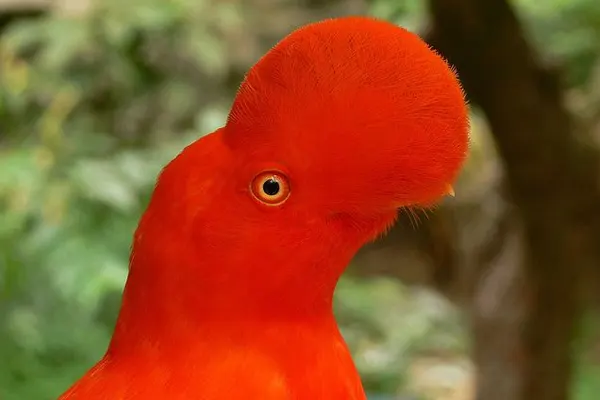
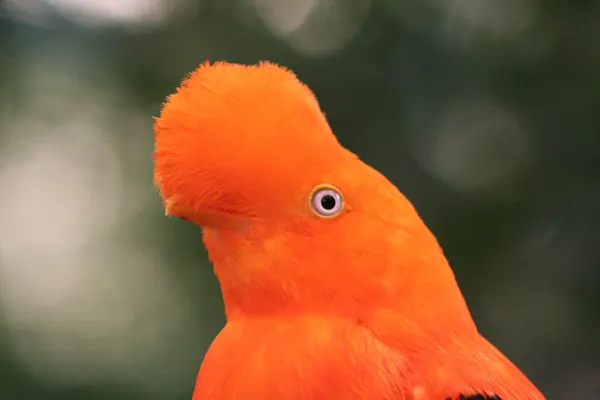
Positives
- Relatively stable populations: The Andean Cock-of-the-Rock has a wide distribution across the Andes, with estimated populations ranging from 2,500 to 10,000 mature individuals.
- Adaptability: They have shown resilience in adapting to some habitat changes, potentially mitigating the immediate impact of threats.
- Conservation efforts: Several organizations are actively working to protect their cloud forest habitat and monitor their populations.
Negatives
- Habitat loss: Deforestation for agriculture, mining, and infrastructure development remains the primary threat, destroying their nesting and foraging grounds.
- Climate change: Rising temperatures and altered precipitation patterns can disrupt their food sources and breeding cycles.
- Pollution: Water and air pollution can negatively impact their health and food availability.
- Disturbance and illegal trade: Human encroachment and illegal capture for the pet trade can further stress populations.
Conservation efforts for the Andean Cock-of-the-Rock should focus on preserving its cloud forest habitat, addressing potential threats such as habitat fragmentation, and ensuring sustainable practices that minimize disturbances during critical periods, such as the breeding season.
Research and Ongoing Studies of Andean Cock-of-the-Rock
Ongoing research contributes to the comprehensive understanding of the Andean Cock-of-the-Rock’s ecology and behavior, helping inform conservation strategies to ensure the long-term survival of this unique bird species.
- Mating strategies: Researchers are studying the intricate lek system, analyzing male dominance hierarchies, female choice, and factors influencing mating success. This data helps predict population dynamics and potential threats to breeding success.
- Vocal communication: Analyzing the diverse calls and vocalizations used during lek displays provides insights into communication patterns, territoriality, and potential mimicry.
- Lek site selection and competition: Understanding the factors influencing lek location and the fierce competition between males can inform conservation efforts in protecting crucial breeding grounds.
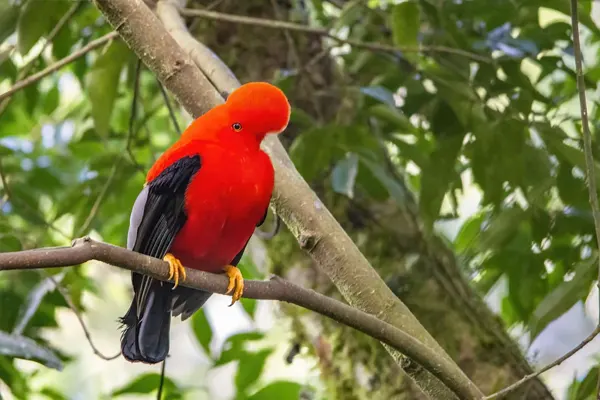
- Habitat fragmentation and connectivity: Studying how habitat modification impacts foraging patterns, movement corridors, and connectivity between populations helps develop strategies to mitigate habitat loss and ensure long-term survival.
- Diet and food sources: Analyzing the diversity of fruits and insects consumed by the birds provides insights into their ecological role and potential threats from changes in food availability.
- Nest site selection and success: Monitoring nest locations, breeding success rates, and factors influencing nest abandonment helps identify vulnerable areas and inform habitat protection strategies.
Research on the Andean Cock-of-the-Rock is multifaceted and ongoing, aiming to understand their behavior, ecology, and threats to their survival. This knowledge is crucial for informing conservation strategies, protecting their cloud forest habitat, and ensuring the continued presence of these captivating birds for future generations.
Educational and Ecotourism of Andean Cock-of-the-Rock
Educational initiatives with responsible ecotourism practices, it is possible to create a synergy that fosters appreciation for the Andean Cock-of-the-Rock, supports local communities, and contributes to the long-term conservation of this unique species and its habitat.
Educational Initiatives
- Awareness Programs
- Educational programs can be developed to raise awareness about the Andean Cock-of-the-Rock, its unique characteristics, and its role in the ecosystem. These programs can target local communities, schools, and tourists to foster appreciation for biodiversity.
- School Outreach
- Collaborations with local schools can include educational materials, presentations, and field trips focused on birdwatching and the importance of conservation. Creating a sense of connection between students and their natural environment is essential.
- Nature Interpretation Centers
- Establishing nature interpretation centers in or near the bird’s habitat can provide visitors with information about the Andean Cock-of-the-Rock, its behaviors, and the importance of preserving its habitat. Interactive exhibits and guided tours can enhance the educational experience.
- Citizen Science Projects
- Engaging local communities and visitors in citizen science projects can contribute to data collection efforts. This involvement not only educates participants but also provides valuable information for ongoing research and conservation initiatives.

Ecotourism:
- Guided Birdwatching Tours
- Offering guided birdwatching tours led by knowledgeable guides can provide visitors with the opportunity to observe Andean Cock-of-the-Rock in its natural habitat. Responsible ecotourism practices ensure minimal disturbance to the birds.
- Photography Workshops
- Photography workshops focusing on wildlife photography, especially the Andean Cock-of-the-Rock, can attract enthusiasts. Emphasizing ethical practices and minimizing disturbance to the birds are essential components of these workshops.
- Lekking Viewing Sites
- Designating specific viewing sites for lekking behavior can allow tourists to witness the unique courtship displays of the Andean Cock-of-the-Rock without disrupting their natural behaviors. Controlled access and interpretative signage can enhance the experience.
- Local Community Involvement
- Integrating local communities into ecotourism initiatives can provide economic benefits and create a sense of stewardship. Community members can serve as guides, share cultural insights, and offer local products or services to tourists.
- Conservation Fees and Donations
- Implementing conservation fees for ecotourism activities can generate funds dedicated to habitat preservation and local conservation efforts. Visitors can also be encouraged to make voluntary donations to support ongoing conservation projects.
Conclusion
The Andean Cock-of-the-Rock (Rupicola peruvianus) stands out as a captivating and iconic bird species inhabiting the cloud forests of the Andes Mountains. Its vibrant plumage, elaborate courtship displays, and unique behaviors contribute to its appeal among birdwatchers and nature enthusiasts.
Efforts in understanding and conserving the Andean Cock-of-the-Rock involve a multi-faceted approach. Ongoing research into its behavioral ecology, nesting habits, and vocalizations provides valuable insights for conservation strategies. The species plays a crucial role in its ecosystem, influencing seed dispersal, regulating insect populations, and serving as an indicator of forest health.
Educational initiatives aimed at local communities, schools, and tourists contribute to raising awareness about the importance of biodiversity conservation. By fostering an appreciation for the Andean Cock-of-the-Rock and its habitat, these programs create a foundation for sustainable conservation practices.
Ecotourism, when approached responsibly, has the potential to benefit both the local communities and the bird species. Guided birdwatching tours, photography workshops, and designated viewing sites for lekking behavior offer opportunities for visitors to connect with nature while minimizing disturbance to the birds.


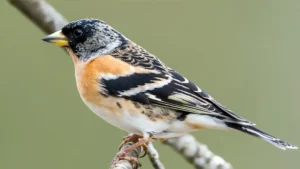
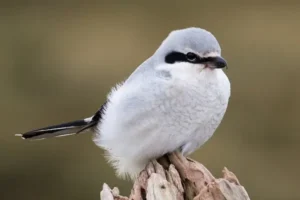
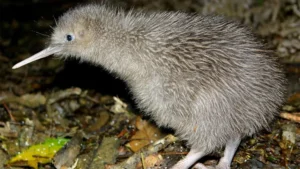






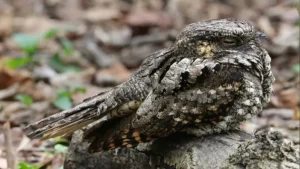

Leave your comment